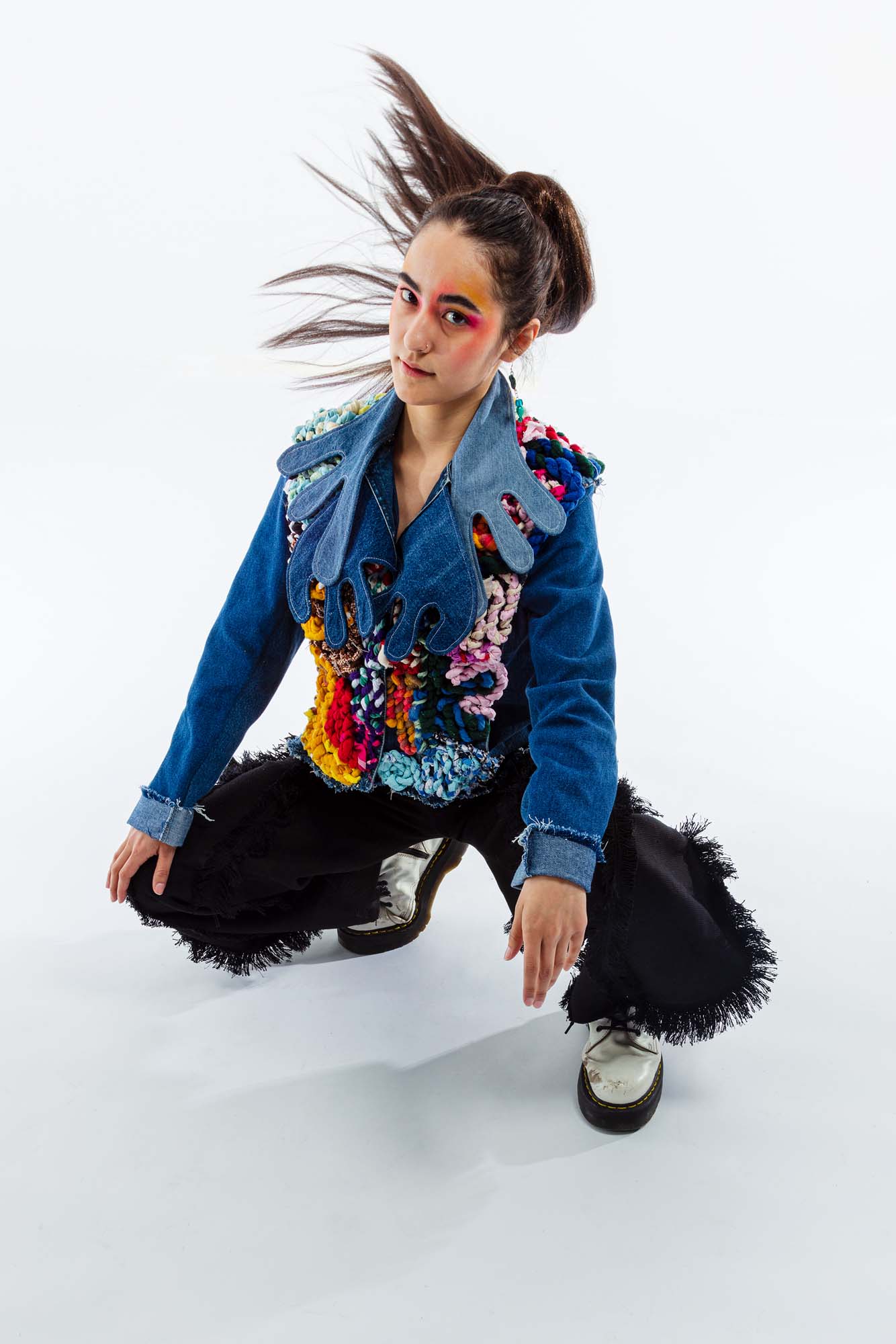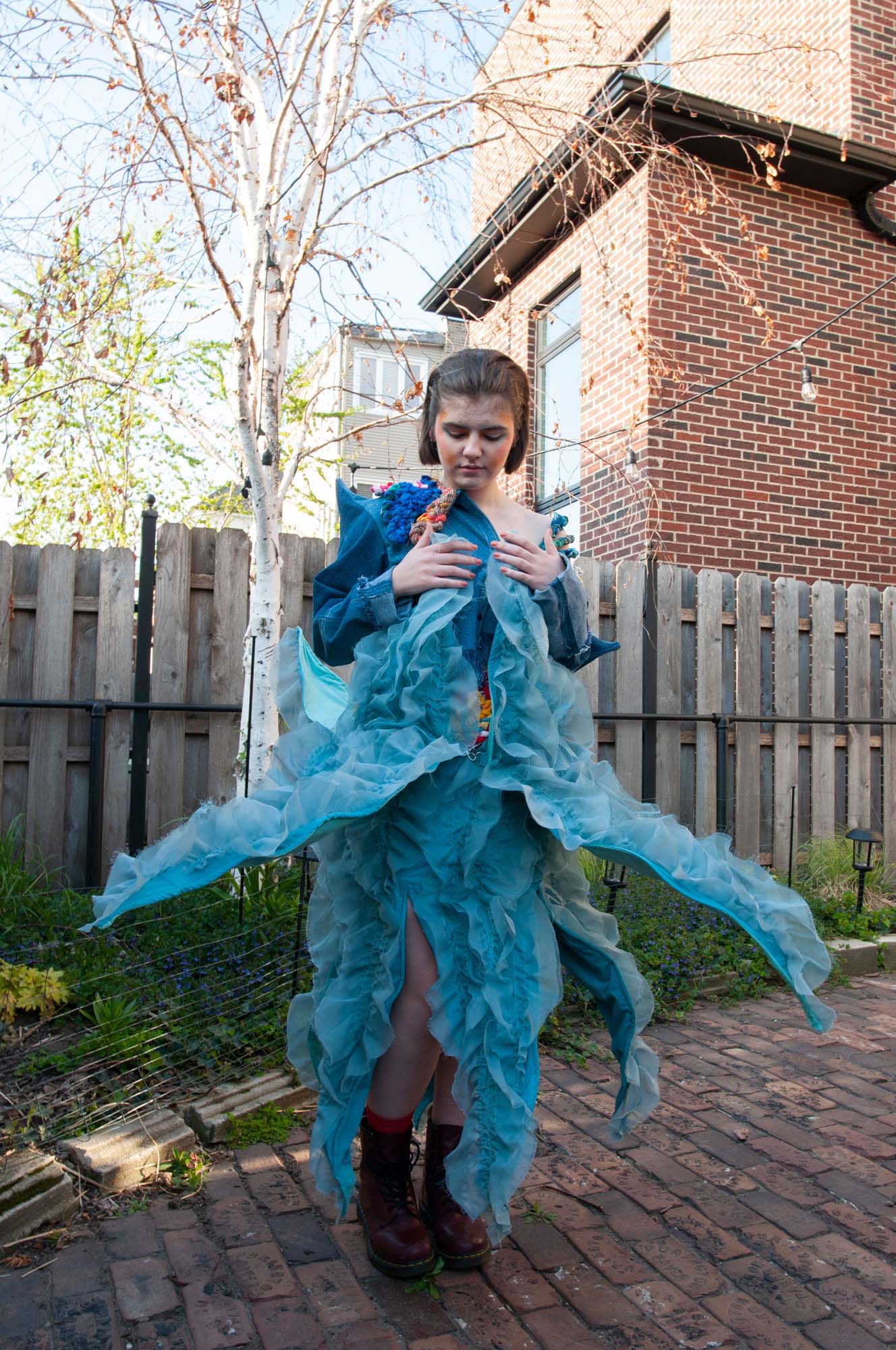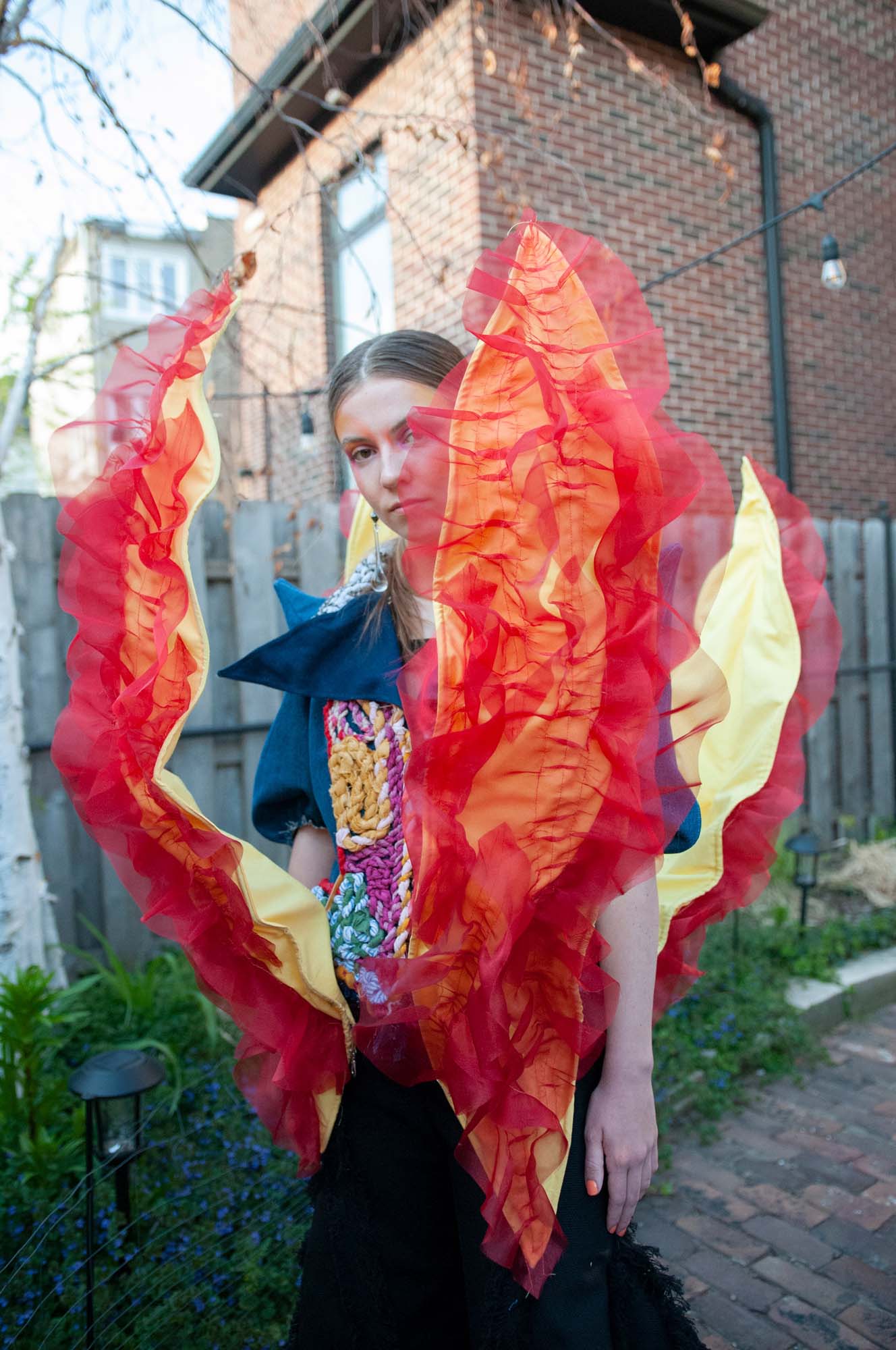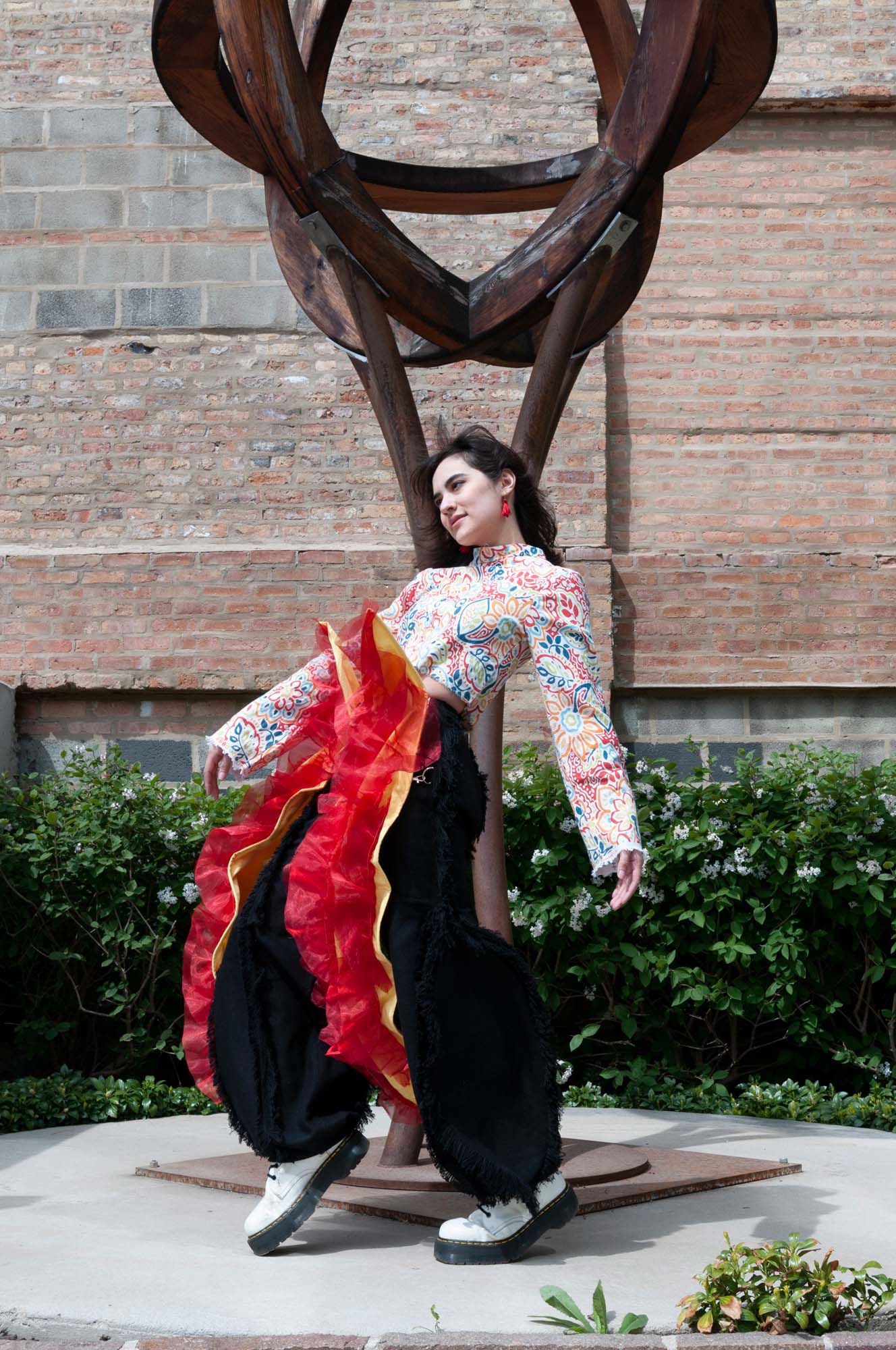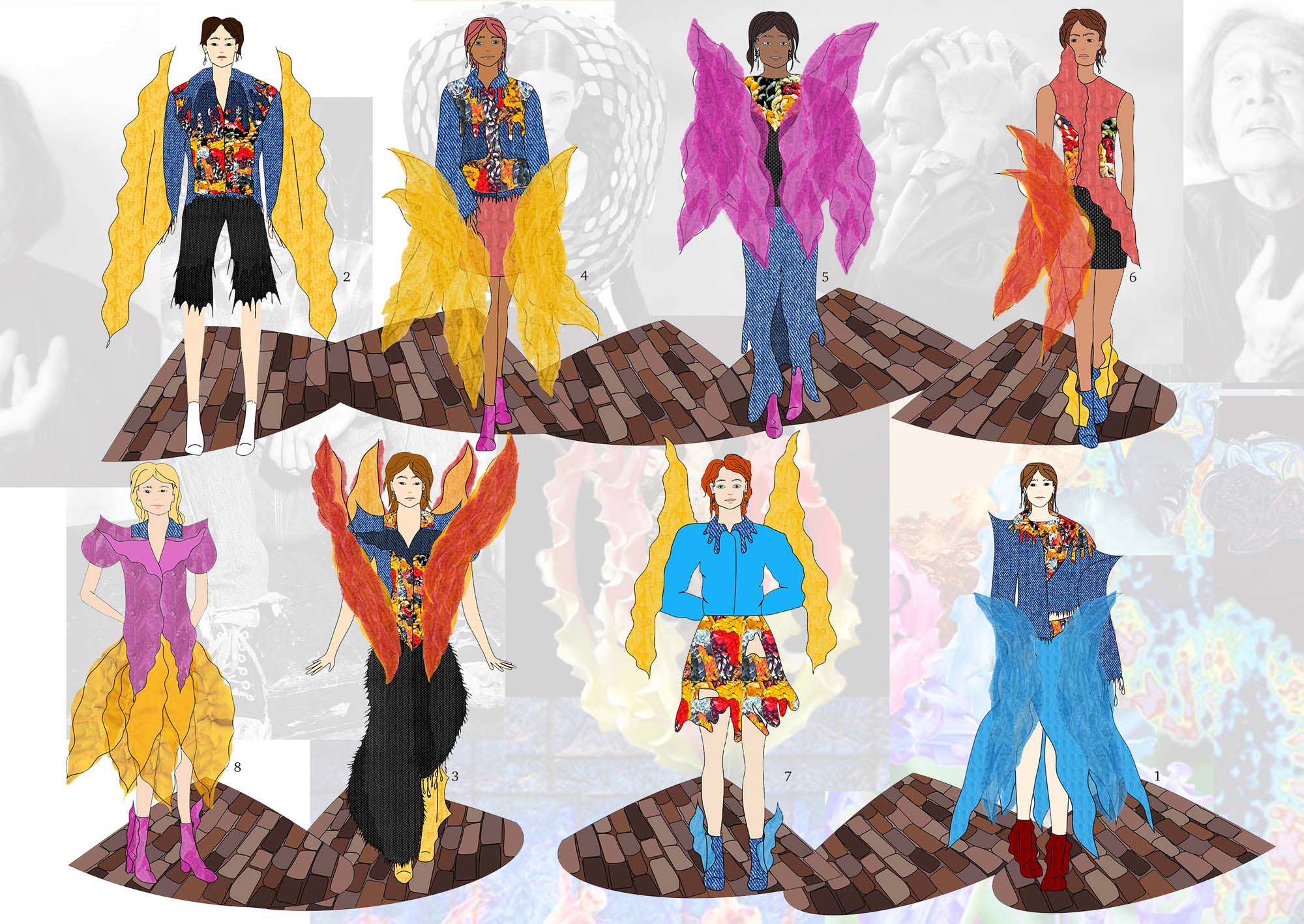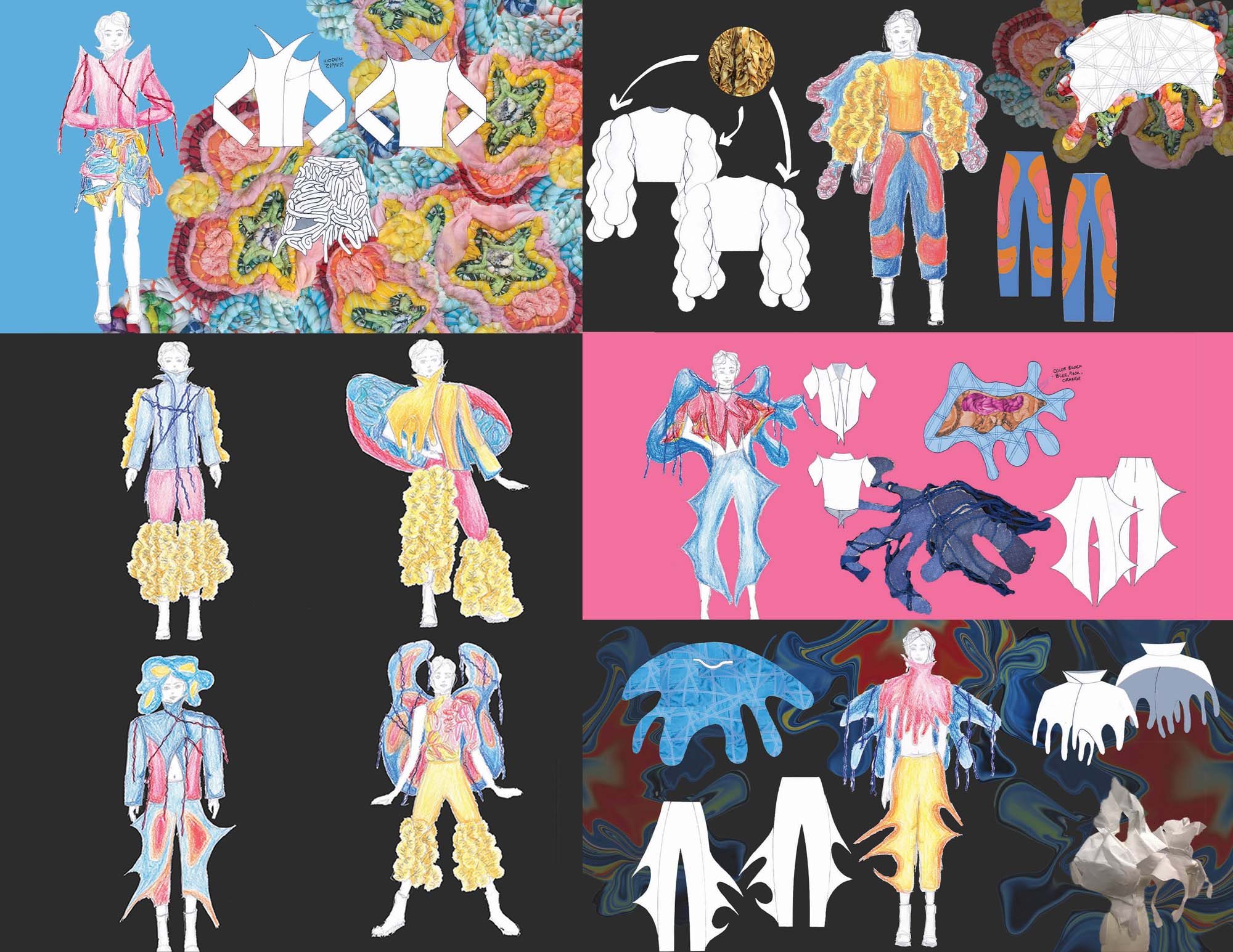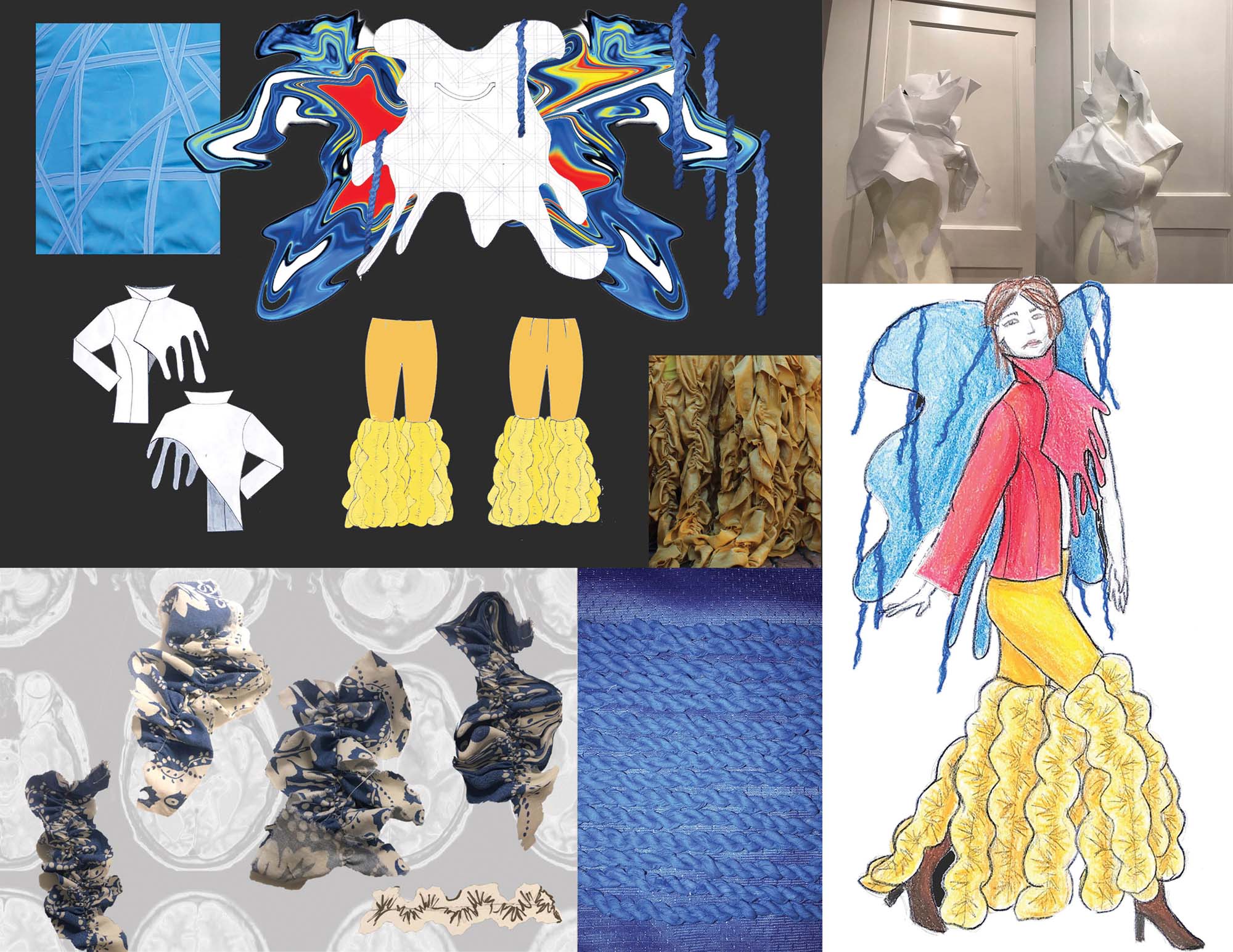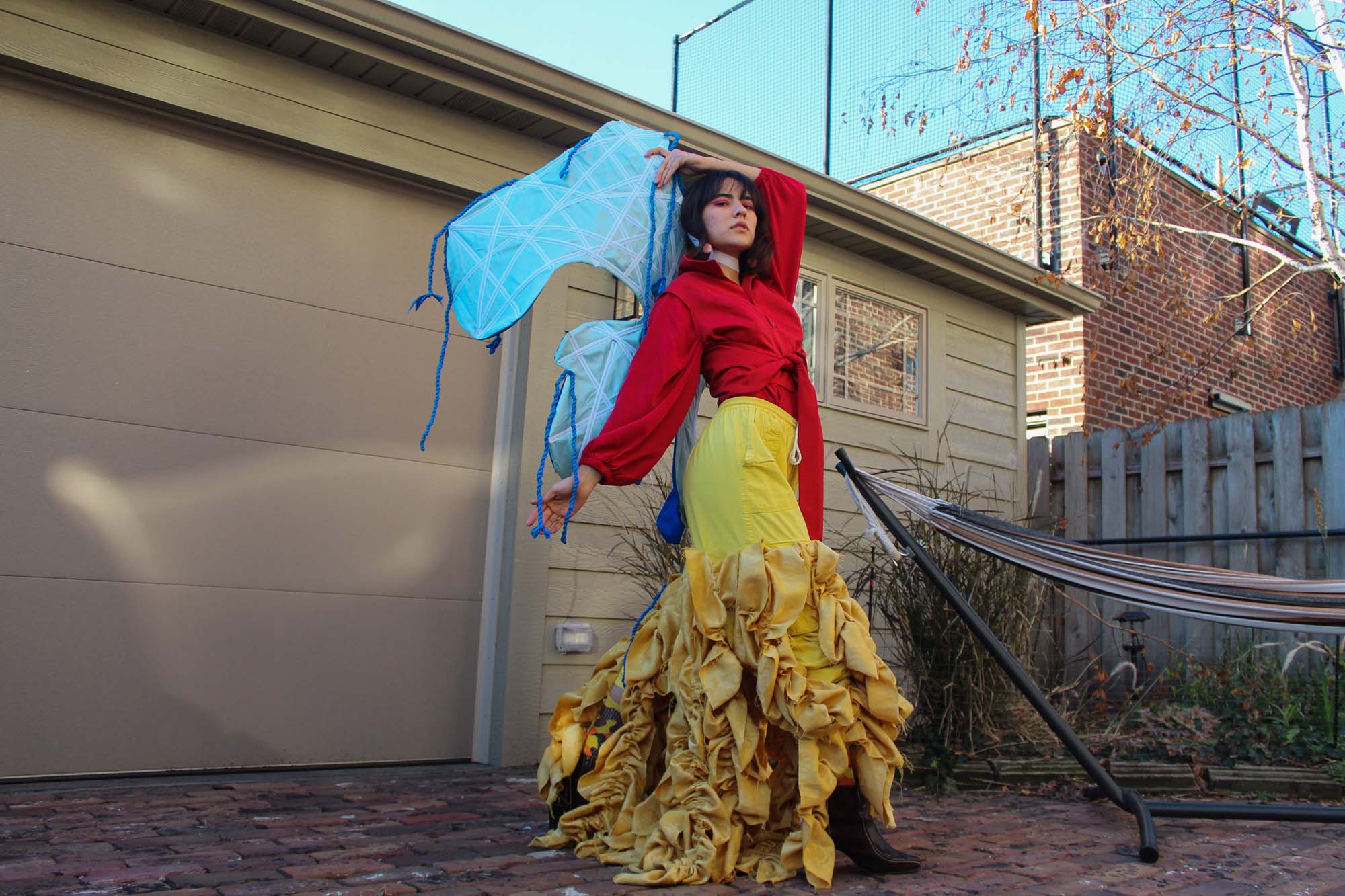Rose Bizub-Rodriguez is a very hands-on designer. She enjoys manipulating fabric to make it unrecognizable from its original state, saving large quantities of unwanted material from landfills, and creating exciting textures. Rose focuses not only on sustainability in her physical work, but also inclusivity in her conceptual designs to condemn the exclusion of those who don’t fit the societal norms in America and criticize elitism in artistic industries. She believes that we can build stronger communities by becoming a more inclusive society, because creating a sustainable future is a community effort, and cannot be done with only individual action. To Rose, the process of making is just as meaningful as the final products.
The projects featured above have been the highlights of my practice during the past year. I believe that there is no question about the role of sustainability in the future of fashion, and to create a more sustainable and better future is to focus on accessibility. Accessibility in everyday life includes not only physical access for everyone but emotional inclusivity as well. This means changing our standards for what is considered “normal” and not teaching people to be ashamed of having intense feelings, but rather to embrace our emotional humanity. Our clothing can not only provide a means for presenting a curated persona but can reveal deeper emotions- how we are actually feeling. In my work I have researched wearable technology- clothing that can show and detect biological reactions and tell the wearer how another person that they are interacting with is feeling. I have considered how this relatively new technology can help people with autism disorder, ADHD, or anyone whose brain processes social and emotional information in a way that makes it more difficult to read how another person is feeling. Our society has a lot of work to do with generally being more emotionally inclusive.
The textures and shapes in my designs were developed from the images of brain scans of people while they experienced different emotions and also from the body language associated with physical emotional responses, such as yelling and crying. I created music videos to accompany each look because listening to music that made me feel emotional while constructing these garments was a personal process of expression that I wanted to share with my audience. The colorful twisted fabric manipulation on the garments in my collection, How I Actually Feel, was made from all the fabric scraps that I have collected from past work I have made, not wanting to throw them away and unsure of what to do with such small pieces of fabric. By including this material, I was able to find a way to turn waste that would have eventually polluted the environment into something beautiful to look at, as well as create a sense of nostalgia that further personified each piece in the collection. Transparent fabrics were gathered in overlayed ruffles to suggest openness and transparency of emotion and create illusions of color and extra movement in the performances. Each bright, overwhelming look ultimately shows how massive the space is that emotions occupy within our mentality, and how much more fun and easy it is to break away from “socially acceptable” standards of showing emotion and publicly express feelings unapologetically. I hope that my work encourages those who interact with it to become more comfortable expressing their feelings.
